Retro Replay Review
Gameplay
The core loop of Pinball is delightfully straightforward: you have a single table on which to rack up points by keeping the ball in play and hitting various targets. Your primary objective is to strike the letters D-R-A-G-O-N in sequence to boost your bonus multiplier, and each successful hit adds a satisfying increment to your score. This simple progression system keeps you focused on lining up precise shots rather than chasing too many goals at once.
(HEY YOU!! We hope you enjoy! We try not to run ads. So basically, this is a very expensive hobby running this site. Please consider joining us for updates, forums, and more. Network w/ us to make some cash or friends while retro gaming, and you can win some free retro games for posting. Okay, carry on 👍)
Strategic depth emerges in the table’s movable sections. By hitting the red protrusions on the left and right, you dynamically reconfigure the lower half of the playfield beneath the letter channel. This mechanic allows you to alter the ball’s angle of entry into the D-R-A-G-O-N sequence, turning a basic pinball simulator into a game of careful planning and risk management. Learning how each configuration change affects your shot can mean the difference between a string of multipliers and a quick drain.
Another unique feature is the white-fill channel in the upper right corner. Every collision with that white block removes a piece of the fill, and once the channel is entirely cleared, your accumulated bonus is awarded instantly. This creates a high-stakes mini-objective that can completely shift the momentum of your session, as players scramble to clear the white fill before losing a ball.
Finally, the reward for consistency is built right into the score: every 2,500 points earns you an extra ball. This extra-ball system encourages you to refine your shots and stay in play as long as possible, making each launch feel more meaningful. Overall, the gameplay loop excels at turning a handful of simple rules into a compelling, score-chasing experience.
Graphics
Pinball uses a semigraphics mode that forgoes any detailed sprites or textures. The entire playfield is rendered in blocky colored regions, and the ball itself moves in a jagged, coarse fashion. On modern machines, this may feel primitive, but it carries a nostalgic charm for fans of early home-computer titles.
The simplicity of the visuals means you’re never distracted by flashy animations or complex backgrounds. Everything you see on the screen directly informs your gameplay decisions—the shape of the table, the location of the letters, and the boundaries of the white-fill channel. This clarity can be a refreshing antidote to today’s visually overloaded pinball sims.
Because it runs in BASIC, the game loads quickly and leaves virtually no memory footprint. There’s no elaborate opening video or loading screen—just an immediate dive into flippers, bumpers, and targets. If you appreciate minimalism or want a quick session without waiting, Pinball’s graphics design serves that purpose perfectly.
Story
Pinball doesn’t offer a conventional storyline or narrative campaign. Instead, it channels the timeless arcade spirit by challenging you to score as many points as possible. The title letters D-R-A-G-O-N hint at a mythic creature, but any “dragon” theme is left to your imagination rather than spelled out through cutscenes or dialogue.
That lack of explicit story is intentional: the focus remains firmly on mechanics and high-score mastery. If you enjoy games where you supply your own narrative context—perhaps envisioning a quest to slay a mechanical dragon—the D-R-A-G-O-N sequence provides just enough thematic hook to fuel your imagination.
For players seeking deep character arcs, plot twists, or branching dialogue, Pinball will feel stark. But for those who love the pure, open-ended fantasy of arcade play—where your greatest tale is written on the high-score table—this game delivers all the narrative freedom you need.
Overall Experience
Pinball’s charm lies in its unpretentious design and tight focus on core pinball mechanics. The BASIC engine and semigraphics mode may feel antiquated, but they also ensure that nothing stands between you and a rapid-fire, score-driven session. There are no microtransactions, no DLC tables, just one impeccably tuned board.
This game will appeal most to retro enthusiasts, hobbyist programmers, and anyone who appreciates minimal overhead combined with classic high-score competition. The learning curve is gentle—you’ll grasp the mechanics in minutes—yet the pursuit of optimal letter sequences and white-fill clears can keep you engaged for hours.
However, if you crave multiple tables, detailed 3D visuals, or narrative depth, Pinball’s single-table simplicity may feel limiting. There’s no online leaderboard or multiplayer mode, and once you’ve memorized the optimal routes, the experience can grow repetitive.
In summary, Pinball is a niche title with clear strengths: addictive scoring mechanics, surprising strategic nuance, and a streamlined retro presentation. It’s perfect for quick bursts of classic arcade fun or for anyone looking to relive the early days of BASIC-powered gaming.
 Retro Replay Retro Replay gaming reviews, news, emulation, geek stuff and more!
Retro Replay Retro Replay gaming reviews, news, emulation, geek stuff and more!

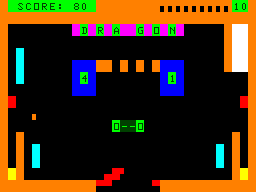
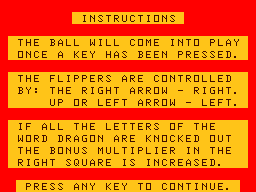
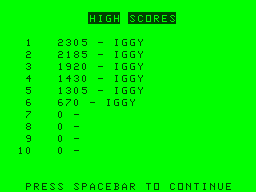
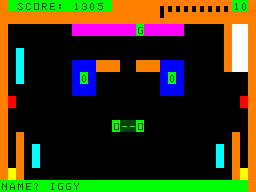
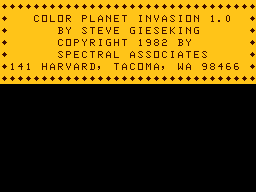


Reviews
There are no reviews yet.